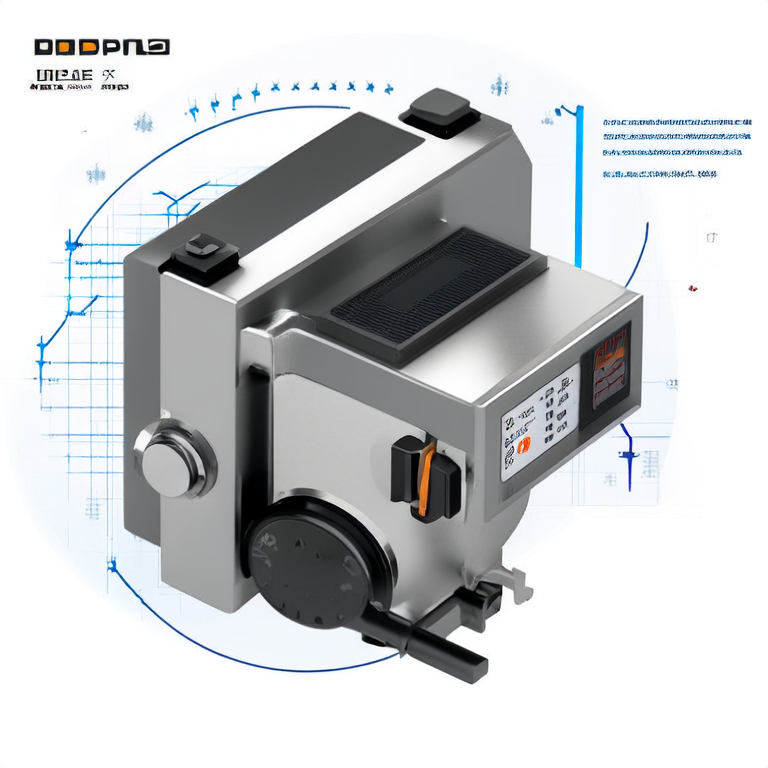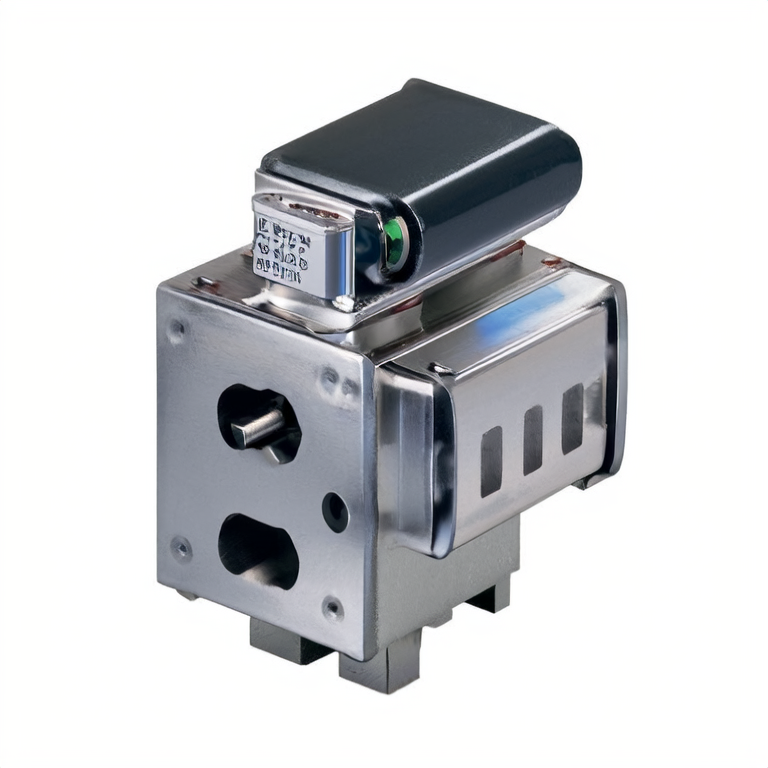What is a Vortex Flow Meter?
Jun. 17, 2025
How Does a Vortex Flow Meter Work?
A vortex flow meter operates by placing a non-streamlined obstruction—called a bluff body—directly in the path of the flowing fluid. As the fluid flows past this bluff body, alternating vortices are generated on either side of it, creating oscillating pressure zones downstream. This phenomenon is known as vortex shedding.
A sensor detects the frequency at which these vortices are shed. Since the shedding frequency is linearly proportional to the velocity of the fluid, the flow rate can be calculated accurately. The meter then uses this information to determine the volumetric flow rate.
Applications and Advantages
Vortex flow meters are well-suited for a wide range of applications, especially in clean liquids, gases, and steam. They are commonly used in industries such as chemical processing, water treatment, and energy production due to their rugged design and low maintenance.
Some notable benefits include:
No moving parts, which minimizes mechanical wear and maintenance.
Stable and repeatable measurements across a wide range of flow conditions.
High accuracy for medium to high flow rates.
Compatibility with high-temperature and high-pressure environments.
Limitations
Despite their versatility, vortex meters do have some limitations:
They may struggle with low flow rates, where vortex shedding becomes unstable.
Multiphase fluids (with entrained air or solids) can disrupt the vortex pattern.
Installation requires adequate upstream and downstream piping to ensure laminar flow conditions.
In summary
Vortex flow meters offer a reliable and maintenance-friendly solution for a broad spectrum of flow measurement needs, particularly when mechanical simplicity and long-term durability are priorities.
A Brief History of Vortex Shedding
The discovery of vortex shedding is credited to physicist Theodor von Kármán, who observed the phenomenon during a fishing trip in the mountain streams of the Transylvanian Alps. He noticed that when a non-streamlined object (a bluff body) obstructed the path of a flowing stream, the water alternately separated from either side of the object. This separation created swirling patterns known as vortices, which formed in a repeating and consistent pattern downstream of the object.
Von Kármán found that the spacing and frequency of the vortices were directly influenced by the size of the object obstructing the flow—not by the fluid velocity or the shape of the vortex, but by the bluff body itself. This discovery laid the foundation for what is now called the Kármán vortex street, a well-known flow phenomenon in fluid dynamics.
Understanding the Phenomenon
On the side of the bluff body where a vortex is forming, the flow velocity increases and the local pressure decreases. The vortex gains energy, grows in size, and eventually detaches (or sheds) from the body. Almost immediately after one vortex sheds, a new vortex begins forming on the opposite side, resulting in a repeating, alternating pattern.
This principle is more than just a curiosity—it’s widely observable in both natural and engineered environments:
The rippling motion of flags is due to air vortices shedding from the flagpole.
Bridge supports, offshore platforms, and tall buildings also experience vortex shedding, which can induce oscillating forces. These must be considered in structural design to prevent resonance and fatigue.
Vortex Shedding in Pipes
In closed fluid systems—like those using vortex flow meters—the vortices are created within a pipe as fluid flows around a bluff body. The alternating vortices dissipate naturally within a few pipe diameters downstream, posing no structural threat. However, they provide valuable measurement data. The consistent frequency of vortex shedding, proportional to flow velocity, forms the core measurement principle of vortex flow meters.
This elegant natural behavior, first noticed in a mountain stream, is now at the heart of a widely used and dependable industrial flow measurement technology.
Vortex Flow Meter Construction
A typical vortex meter consists of three primary components: a bluff body across the pipe bore, a detector that senses the pressure oscillations, and an electronics module that converts these signals into a usable flow reading. The flow tube is usually fabricated from corrosion‑resistant materials such as 316‑grade stainless steel or nickel‑based alloys. Electronics can be mounted directly on the meter or installed remotely, depending on site requirements.
These meters are commonly supplied in nominal pipe sizes from ½ in. up to about 12 in. For lines below roughly six inches, the installed cost is comparable to that of orifice plates. Wafer‑style (flangeless) designs are the least expensive, whereas flanged versions are preferred for hot or hazardous fluids that demand a tighter seal.
Bluff Body Geometry
Over the years, engineers have tested square, rectangular, trapezoidal, and other cross‑sections to optimize performance. Although minor differences exist, overall linearity, Reynolds‑number limits, and resistance to distorted velocity profiles vary only slightly with shape. What matters most is that:
Width – The bluff body must occupy enough of the pipe diameter to ensure the entire flow participates in vortex shedding.
Edges – Sharp upstream corners help fix the separation points so shedding occurs consistently over the full flow range.
Length – The dimension in the flow direction should be several times the bluff‑body width for a stable vortex street.
Sensing Elements
Modern designs almost always use piezoelectric or capacitance‑type sensors to pick up the alternating pressure field. These devices generate a low‑level electrical signal at the same frequency as the vortices and can tolerate extremes from cryogenic temperatures to superheated steam.
Internal (wetted) sensors sit inside the body, directly exposed to the fluctuating pressure. They deliver excellent sensitivity and broad turndown, but must be built to resist corrosion and erosion.
External sensors—often piezoelectric strain gauges attached to the shedder bar—detect the mechanical bending caused by vortex forces. They avoid contact with the process fluid, making them a smart choice where media are highly corrosive or abrasive, though they are somewhat more susceptible to pipe vibration.
The transmitter enclosure, typically certified for hazardous and outdoor locations, houses the signal‑conditioning electronics, wiring terminals, and—if specified—local rate or totalizing displays.
Vortex Flow Meter Styles and Advanced Capabilities
Modern vortex flow meters have evolved significantly beyond their basic function of measuring volumetric flow. Today’s smart vortex meters integrate advanced electronics and diagnostic intelligence, making them more versatile and accurate across a wider range of applications.
Smart Metering Functions
Equipped with onboard microprocessors, smart vortex meters can provide digital outputs that convey not only flow rate but also diagnostic data, configuration settings, and calibration information. These advanced instruments offer several key benefits:
Auto Compensation: Built-in algorithms adjust for installation effects such as insufficient straight-run piping, mismatches in pipe and meter bore diameter, and thermal effects on the bluff body’s geometry.
K-Factor Corrections: At lower Reynolds numbers (under 10,000), changes in flow behavior can affect meter performance. Smart meters dynamically adjust the K-factor (the calibration constant relating frequency to flow rate) to maintain accuracy.
Self-Diagnostics: These meters routinely monitor themselves for internal faults or unusual process conditions. On-demand test routines help validate system performance, supporting maintenance strategies and compliance with quality systems like ISO 9000.
Mass Flow Measurement
While standard vortex meters measure volumetric flow, some models extend their capabilities to mass flow measurement:
Dual-Parameter Detection
Certain vortex meters simultaneously measure the frequency and amplitude of the vortex signal. Since amplitude can be influenced by fluid density, this allows for the derivation of additional process information such as mass flow or energy content, especially in steam and gas applications.

Accuracy and Rangeability of Vortex Flow Meters
Vortex flow meters offer solid performance in a wide variety of applications, but like all flow technologies, they come with certain performance boundaries — particularly related to fluid viscosity and Reynolds number.
Viscosity and Reynolds Number Impact
The accuracy and effective measuring range of vortex meters are closely tied to the Reynolds number, which itself is affected by fluid viscosity:
As viscosity increases, the Reynolds number decreases, which can narrow the meter’s rangeability and increase measurement error.
In practical terms, vortex meters generally perform well with fluids up to 8–30 centipoise. Beyond this, vortex shedding becomes irregular, and flow readings lose reliability.
Typical Rangeability
When appropriately sized for the application, vortex meters can deliver:
Better than 20:1 turndown (rangeability) in gas and steam services.
More than 10:1 turndown in low-viscosity liquid applications.
Proper sizing is essential — undersized or oversized meters can result in reduced accuracy and lower operational range.
Accuracy Expectations
For Reynolds numbers above 30,000, vortex meters typically maintain a ±0.5% to ±1% of reading accuracy.
As Reynolds numbers drop, particularly below 10,000, the error can increase to ±10%, which may be unacceptable in precision-critical processes.
Low Flow Cutoff Behavior
Unlike some flow technologies that continue to output (albeit inaccurately) at extremely low flows, vortex meters include a built-in low-flow cutoff:
Below a certain flow rate (corresponding to a Reynolds number near 10,000), the meter clamps its output — usually to 4 mA in analog systems.
This is intended to prevent misleading low flow readings, but it also means flow activity during startup, shutdown, or low-load conditions might not be captured.
As a best practice, it's recommended that your minimum process flow should be at least double the meter’s cutoff threshold to ensure reliable operation.
Applications and Limitations of Vortex Flow Meters
Typical Applications
Vortex flow meters are widely used in the following scenarios:
Steam Flow Measurement: Especially in clean, dry steam applications where accuracy and durability are key.
Compressed Air and Gases: For applications involving pressurized air, nitrogen, or natural gas, provided the pressure and density are sufficient.
Clean Liquids: Water, solvents, and hydrocarbons with low viscosity are well suited to vortex measurement.
Industrial Utilities: HVAC systems, boiler feedwater, and plant utilities often benefit from vortex meters' low maintenance requirements.
Mass Flow Applications: When combined with temperature and pressure sensors, vortex meters can also calculate mass flow for gases, steam, and liquids.
Known Limitations
Despite their versatility, vortex meters have several application constraints:
Batching and Intermittent Flow: Not recommended due to low-flow cutoffs. The dribble phase of small batch processes often falls below the minimum Reynolds threshold, causing large measurement errors.
Low Pressure or Low Velocity Gases: Weak vortex signals in low-density gases make it hard to detect vortices reliably. If this is unavoidable, accurate measurement may still be possible with proper sizing and if rangeability requirements are relaxed.
Slurries and Coating Fluids: Fluids that build up on the bluff body (e.g., sludge, scale-forming liquids) can distort the vortex pattern and reduce meter repeatability over time.
Installation Best Practices for Vortex Flow Meters
Sizing and Initial Flow Assessment
When installing into an existing system where flow conditions are unknown, it is strongly recommended to assess the process flow rate first—for example, using a portable pitot tube or a clamp-on ultrasonic meter. This helps determine whether a line-size vortex meter is suitable or if the pipe should be necked down to achieve measurable velocity.
Straight Pipe Requirements
To ensure a stable, symmetrical flow profile, vortex meters require adequate straight-run piping:
Upstream: Typically 30 pipe diameters if preceded by valves, elbows, or pumps.
Downstream: At least 5–6 diameters free of obstructions or pressure taps.
Temperature elements should be placed at least 5–6 diameters downstream to avoid interfering with flow.
If straight pipe runs are limited, flow conditioners can help, but some relaxation piping is still necessary to stabilize the velocity profile.
Pipe and Flange Considerations
The inner diameter of the process piping must match the flow meter bore closely.
Use concentric reducers and expanders if necking down is required.
Avoid using reducing flanges; weld neck flanges are preferred for alignment and stability.
Ensure the pipe bore is smooth and free of scale or irregularities for several diameters upstream/downstream to prevent turbulence.
Mounting Orientation
Vortex meters are versatile in mounting but must remain flooded to function correctly:
Vertical installation (upward flow) is preferred for liquid service to ensure full pipe conditions.
For horizontal or downward flow, downstream piping should be elevated, or check valves used to prevent draining.
Block and bypass valves should be included if the sensor might need replacement without interrupting process flow.
Vibration and Noise Control
Support the meter firmly on both sides to avoid vibration-induced error.
If plant vibration is an issue, rotate the meter so the sensor is positioned away from the vibration plane.
Minimize process noise from pumps, valves, or steam traps that may cause false readings at low flow.
Increase electronic noise filtering if needed, though this may reduce low-end sensitivity.
Alternatively, relocate the meter to a quieter section of the process.
Proper installation ensures your vortex flow meter operates with maximum accuracy and long-term stability, avoiding common issues like cavitation, vortex signal loss, or drift due to poor alignment or process disturbances.
Contact Beijing Gallop group technical team for personalized guidance on choosing vortex flow meter. We'll help you assess your tank design, liquid type, and environmental conditions to ensure optimal performance.




